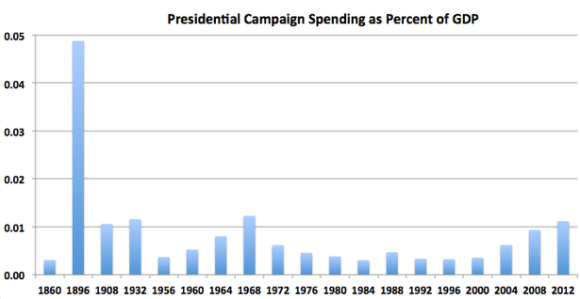Incumbents hold a number of advantages over their challengers. They have policy records. They’ve demonstrated that they are electable. They can provide constituent services from helping grease the wheels of a sclerotic bureaucracy for stymied constituents to offering condolences in times of tragedies and congratulations for sporting championships and similar accomplishments. Perhaps most importantly, voters recognize their name when they enter the polling booth. They are well known. And name recognition matters. Cognitive short cuts like party identification and the confident proclamations of news commentators serve as lighthouses in a sea of unanchored opinions, and tidbits of information (See Chapter 11). A name works similarly. Recognizing a name on the ballot–even if you cannot place from where you know it–is a signal that the candidate is not a nobody. But in some cases a name may not only bring up past accomplishments but also well-documented shortcomings.
Former South Carolina Governor Mark Sanford attempts to resurrect his political career today by winning the congressional seat last held by Tim Scott who was appointed to the Senate following the midterm retirement of Jim Demint. Casual observers of politics may remember Mark Sanford as the governor who was caught in a web of lies covering up an extramarital affair. The house of cards came tumbling down when what he claimed to be a long weekend hiking the Appalachian Trail was in fact a clandestine flight to South America to see his Argentinean mistress. (A investigative reporter was waiting for him at the airport upon his return.)
Sanford’s republican credentials in the strongly conservative congressional district would normally be enough to beat out a Democratic challenger. But Sanford’s scandal as governor, and more recently allegations of wrongdoing by his ex-wife, make the outcome far less certain. Making the outcome even more uncertain is the fact that the Democrat in the race owns a recognizable last name like the putative incumbent Sanford. Elizabeth Colbert-Busch, the sister of political satirist Stephen Colbert, and a considerably more serious personality shares many of the same dilemmas with her last name as Governor Sanford does with his.
Both last names should be recognized by large numbers of voters, which is positive. For each politician’s base supporters that name should serve as a clear signal of their ideological bona fides. But for moderate voters and poorly informed voters the names may serve as a turnoff if they bring to mind Appalachian Trail antics and the Stephen Colbert’s absurdity. For now the polls show Sanford and Colbert-Busch to be neck-and-neck.
